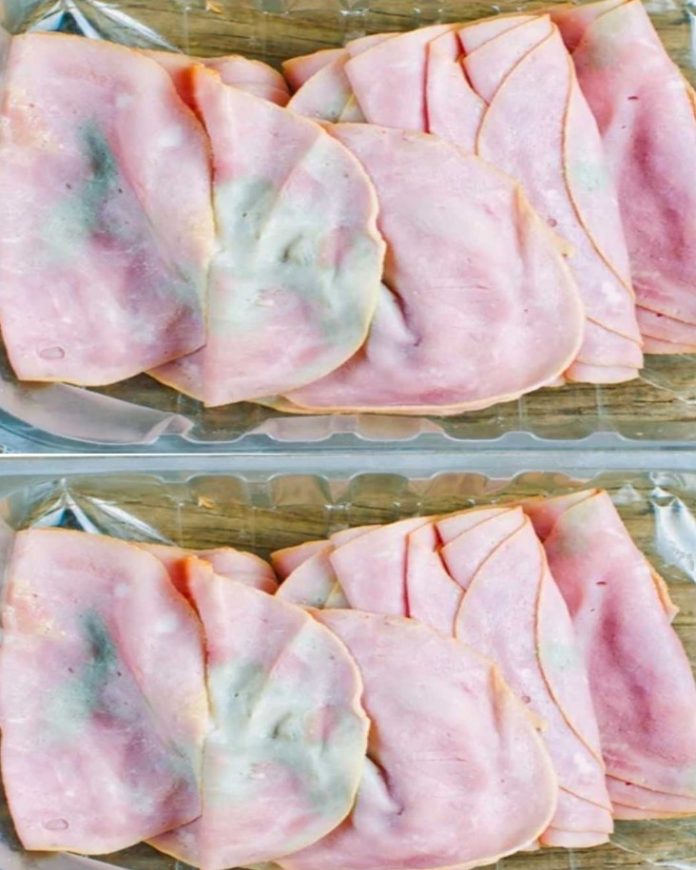We’ve all been there: you open the fridge, grab a package of deli meat, and suddenly hesitate. The meat doesn’t look quite right, but your mother-in-law insists it’s wasteful not to use it. This common household dilemma brings up important considerations about food safety, minimizing waste, and making the best decision for your family’s health.
Should you take the risk and eat it, or is it safer to throw it away? In this article, we’ll dive into the factors to consider when dealing with questionable deli meat and provide guidance on handling the situation responsibly.
Understanding the Shelf Life of Deli Meat
Deli meats, whether pre-packaged or freshly sliced from the deli counter, have a limited shelf life. While preservatives and packaging methods help extend freshness, these meats are still perishable. Here’s a general guideline for their longevity:
- Pre-packaged deli meats (such as turkey, ham, and roast beef) typically last 7 to 10 days after opening, provided they are stored correctly in the refrigerator.
- Freshly sliced deli meats from the grocery store should be eaten within 3 to 5 days.
- Cured meats like salami and pepperoni have a longer shelf life due to preservatives but still need proper refrigeration.
These timeframes may vary based on factors such as the type of meat, the presence of preservatives, and how the product has been stored. Understanding these guidelines is essential to making an informed decision about whether your deli meat is still safe to consume.
Signs That Deli Meat Has Gone Bad
Before deciding whether to eat or discard deli meat, examine it carefully for signs of spoilage. Here are key indicators that your deli meat may no longer be safe:
- Unpleasant Smell: Fresh deli meat has a mild aroma, depending on the type of meat. If it smells sour, rotten, or just “off,” it’s likely spoiled.
- Slimy or Sticky Texture: Fresh deli meat should be smooth and slightly moist but not slimy or sticky. A slimy surface is a strong sign of bacterial growth.
- Discoloration: Deli meat that has turned gray, brown, green, or developed an iridescent sheen is no longer fresh and should be discarded.
- Mold Growth: Any visible mold—whether white, black, or green—indicates spoilage and renders the meat unsafe to eat.
If you notice any of these signs, it’s best to trust your senses and err on the side of caution. Spoiled meat is not worth the risk.
The Risks of Consuming Spoiled Deli Meat
Foodborne illnesses caused by consuming spoiled deli meat can be severe. Bacteria such as Listeria monocytogenes, Salmonella, E. coli, and Staphylococcus aureus can grow on deli meat, leading to food poisoning. Symptoms of foodborne illness include:
- Nausea
- Vomiting
- Diarrhea
- Stomach cramps
- Fever
- Fatigue
Certain groups are more vulnerable to foodborne illnesses, including young children, pregnant women, the elderly, and individuals with weakened immune systems. Listeria, in particular, can be dangerous, even deadly, for these populations. Given these risks, it’s essential to prioritize safety when dealing with questionable deli meat.
How to Properly Store Deli Meat to Extend Freshness
To maximize the freshness and safety of deli meats, follow these storage best practices:
- Refrigeration is Key: Store deli meats in the coldest part of your refrigerator, ideally at or below 40°F (4°C).
- Keep It Airtight: Use airtight containers, plastic wrap, or aluminum foil to seal deli meats and minimize exposure to air and moisture.
- Label with Dates: Write the date on the packaging when you first open it to keep track of how long it has been in the fridge.
- Use the Freezer for Longevity: If you don’t plan to eat the deli meat within a few days, consider freezing it. Most deli meats can be safely frozen for 1 to 2 months.
- Avoid Cross-Contamination: Store deli meats away from raw foods, such as chicken or beef, to prevent bacterial transfer.
By implementing these storage techniques, you can help extend the shelf life of deli meats and reduce waste while maintaining food safety.
Alternatives to Throwing Away Questionable Deli Meat
If your deli meat doesn’t exhibit clear signs of spoilage but is nearing the end of its shelf life, consider these alternative solutions:
- Cook It Thoroughly: If the meat still looks and smells fine but is close to its expiration, cooking it thoroughly can kill some bacteria. Use it in soups, casseroles, omelets, or stir-fries to avoid waste while staying safe.
- Composting: Some composting systems allow for meat decomposition, though this depends on the method used. If you compost at home, research whether meat is acceptable in your system.
- Feeding Pets (with Caution): If the deli meat is only slightly past its prime but not spoiled, certain meats (like plain turkey or chicken) can be given to pets in moderation. However, be cautious, as some processed deli meats contain high sodium levels and preservatives that can be harmful to animals.
- Creative Repurposing: If you’re determined to avoid waste, consider using slightly older meats in slow-cooked recipes where they will be exposed to high heat for an extended period.
However, if the meat shows clear signs of spoilage, it’s best to throw it away. No amount of cooking can make spoiled meat safe to eat once bacteria and toxins have developed.
Dealing with Family Pressure About Food Waste
One of the trickiest aspects of throwing away questionable deli meat is dealing with family members who dislike food waste. Your mother-in-law may believe that food should never be discarded unless it’s visibly rotten, but it’s important to prioritize health and safety over guilt or social pressure.
Here’s how to handle the situation tactfully:
- Educate Kindly: Share facts about foodborne illnesses and the risks of eating expired meat.
- Offer Alternatives: Explain that while you hate wasting food, you are open to using alternative methods like composting or freezing.
- Compromise: If she insists the meat is fine but you’re uncomfortable eating it, offer to cook it thoroughly in a way that reduces bacterial risks.
- Stand Firm: At the end of the day, it’s your health at stake. Politely but firmly state that you prefer to err on the side of caution.
Conclusion:
Making the Safe and Smart Choice
When faced with questionable deli meat, it’s essential to balance the desire to reduce waste with the need to prioritize health and safety. Understanding the shelf life of deli meats, recognizing signs of spoilage, and following proper storage methods can help prevent foodborne illnesses. If there’s any doubt about the freshness of the meat, trust your instincts and throw it away—it’s always better to be safe than sorry.
By taking these precautions, you can confidently make decisions about food safety while still being mindful of waste. And if you ever find yourself debating with a well-meaning mother-in-law over questionable deli meat, you’ll have the facts on your side. Stay safe, trust your senses, and always prioritize your family’s well-being!










